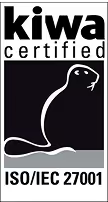
Unified Digital Lockers for Visitors, Staff, and Offices


New locks implemented in Phase 1, with 1,500 additional locks being installed in 2026
Our platform solved needs for visitors, employees, and asset management
Reduction in maintenance effort
Summary
Modernizing storage in a world-class museum
Located in the heart of Amsterdam, the Rijksmuseum is one of the Netherlands’ most visited cultural landmarks, welcoming millions of guests every year.
Behind the scenes, the museum faced mounting operational pressure from its ageing locker infrastructure. Key-based systems were difficult to manage, occupancy was unclear, and lost keys had become a daily challenge. With limited locker availability and growing maintenance demands, the museum sought a more efficient, scalable way to serve both visitors and staff while preserving the smooth, world-class experience expected from such an iconic institution.
Rijksmuseum’s Challenges
Lost Keys
Manual key management led to frequent losses, lockouts, and frustrated visitors.
Unknown occupancy
No real-time status meant lockers stayed blocked for long periods, limiting capacity during peak times.
Locker shortage
Demand outpaced supply, driving queues, delays, and negative on-site visitor experiences.
Rising maintenance
Ageing mechanical locks increased failures, repair costs, and operational workload for facilities teams.
Staff time drains
Manual issuance, key replacement, and troubleshooting diverted staff from higher-value guest support.
A Smarter Solution
Discovery
Rijksmuseum evaluated live Keynius sites in Amsterdam, then ran a proof of concept to validate flows for visitors, staff, and office use.
Solution & Recommendation
Deploy an integrated Keynius platform with RFID, QR, and badge access on Luvio lockers, unified monitoring, and Azure AD authentication.
Customization & Collaboration
Olssen and Keynius worked on-site with the implementation manager, tested scenarios on a POC cabinet, then executed the phased rollout in three months.
Why Keynius
One platform covers visitor cloakrooms, staff changing rooms, and office equipment lending, with centralized control, data, and scalable rollout.
The Results: Secure, Scalable, Centralized
Keynius reduced key loss, increased visibility of occupancy, and cut maintenance effort. The unified platform now supports multiple user groups, with Phase 1 complete and a 1,500-locker visitor cloakroom planned for 2026.
- 409 lockers live for library and staff.
- 1,500 visitor lockers planned for 2026.
- Azure AD centralizes authentication and control.
- Lower maintenance, fewer disruptions, faster turnover.
Conclusion
By replacing key-based systems with Keynius, the Rijksmuseum gained a future-ready locker platform that improves visitor flow, simplifies staff operations, and consolidates management. The collaboration with Olssen ensured a tailored design, rapid delivery, and durable materials.
With Phase 1 live and a large visitor cloakroom expansion scheduled, the museum is positioned to serve high volumes efficiently, securely, and sustainably for years to come.
Smart lockers for every solution
Contact us now to learn how Keynius can turn your storage problems into practical, profitable solutions.

Related Case Studies





.jpg)






%201.svg)
%201.svg)
